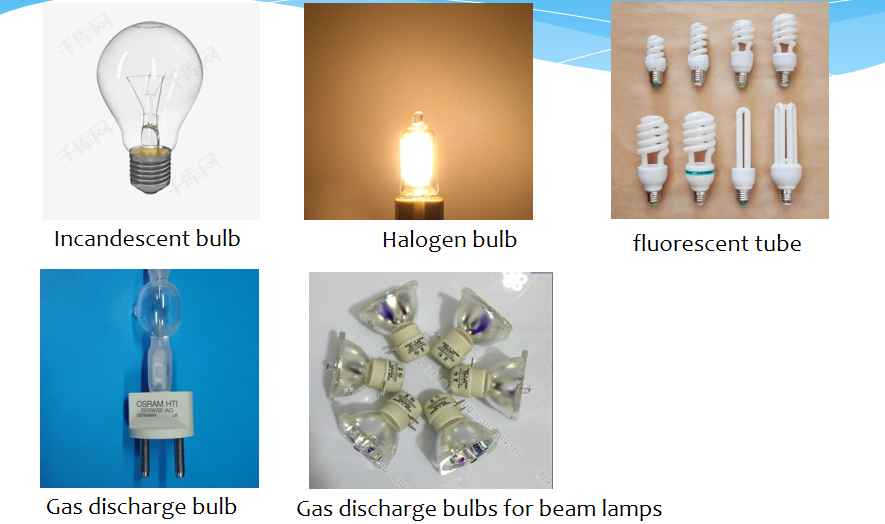
Publish Time: 2023-10-08 Origin: Site

Evolution of Stage Lighting Sources: A Comparative Analysis
Introduction
The world of stage lighting has seen significant advancements, with various types of light sources illuminating the theatrical landscapes. Among the diverse options, traditional bulb light sources have played a pivotal role. This article explores four conventional bulb light sources – Incandescent Lamps, Halogen Lamps, Fluorescent Lamps, and Electric-Discharge Lamps – and delves into the intriguing world of lasers.
1. Incandescent Lamps
Incandescent lamps, pioneered by the American inventor Thomas Edison in 1879, operate by heating a filament to incandescence, emitting visible light through thermal radiation. Although they have a warm, inviting glow, their inefficiency, short lifespan (1000 hours), and excessive heat emission have led to their decline in the market.
2. Halogen Lamps
Halogen lamps, infused with halogen gases, chemically interact with tungsten filaments, preventing premature filament breakage. While they share similarities with incandescent lamps, halogen lamps have a longer lifespan (3600 hours) and a slightly warmer color temperature (2700K-3500K), making them a preferred choice in theaters.
3. Fluorescent Lamps
Fluorescent lamps, also known as daylight lamps, operate on the principle of low-pressure mercury vapor producing ultraviolet light, which in turn excites phosphor to emit visible light. These lamps are highly efficient, emit minimal heat, and offer a lifespan of approximately 5000 hours. Their color temperature ranges from warm (2700K) to cool (6500K), providing versatile lighting options.
4. Electric-Discharge Lamps
Electric-discharge lamps utilize special vapors or gases to generate radiation approaching visible light. They are highly efficient, emit less heat, and have a longer lifespan (4000 hours). The color temperature of these lamps ranges from cool white (6500K) to daylight white (8000K), making them suitable for various stage lighting applications.
Laser Lighting
In the realm of modern stage lighting, lasers have become a popular choice, emitting light through stimulated emission of photons. Laser light is characterized by its monochromaticity, directional focus, and high brightness. While commonly used in bars and nightclubs due to their excellent beam convergence, it's crucial to avoid direct camera exposure to laser sources to prevent damage.
Conclusion
The evolution of stage lighting sources highlights the industry's continuous quest for efficiency, durability, and artistic expression. Each type of bulb light source, from incandescent to electric-discharge lamps, offers unique characteristics catering to different theatrical needs. As technology advances, these traditional sources continue to inspire creative illumination while coexisting with newer technologies like lasers, enriching the visual experience on stage and enhancing the magic of live performances.
FOSHAN DRAGON STAGE
No.7,Xiaxi Industrial Area,Heshun,Nanhai District,Foshan,528241,Guangdong,China.
+86 136 3132 8997
